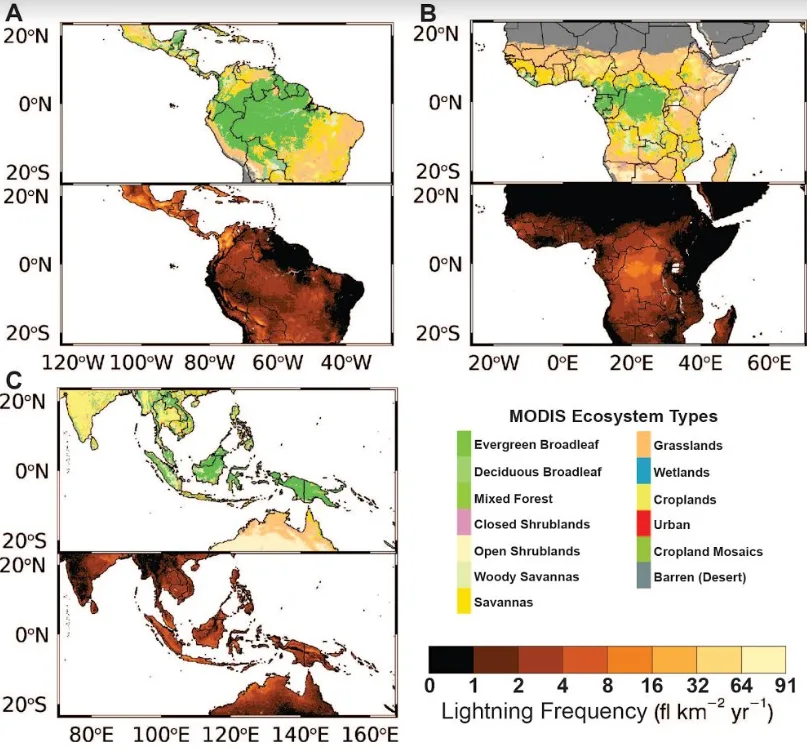
New study finds lightning destroys 832 million trees each year in tropics alone
Lighting may play a bigger role in ecosystem breakdowns than previously thought, according to a new study.
Lighting is causing significant damage to ecosystems, damaging or killing more than 800 million trees each year in the tropics alone, according to a new study out of the Smithsonian Tropical Research Institute (STRI).
Based on ground and satellite data, researchers were able to estimate there are more than 100 million lightning strikes on land each year in tropical regions.
According to the authors, the findings are significant, given the challenges associated with studying lightning. Because of this, its ability to alter ecosystems is often overlooked in favour of other destructive events like storms, drought, or fire.
Even a single lightning strike can impact an ecosystem. Past research suggests one strike damages approximately 23.6 trees, leading to the eventual death of about 5.5 of them.
For the current research, scientists analyzed the impact of about 92 lightning strikes, estimating lightning damages approximately 832 million trees in the tropics alone each year. An estimated 25 per cent of those trees die from their injuries.
SOME ECOSYSTEMS MORE PRONE TO LIGHTNING STRIKES

Courtesy: Evan Gora.
Lightning strikes are the most frequent in forests, savannas, and urban areas when compared to grasslands, shrublands, and croplands.
"The processes that influence lightning frequency are complex and difficult to simplify," lead author Evan Gora, a post-doctoral fellow at STRI, tells The Weather Network in an email.
"Fundamentally, different climatic conditions lead to differences in vegetation, and we define different ecosystems based on their vegetation. Those same climatic conditions also influence local lightning frequency."
Researchers still aren't sure why some trees survive lightning while others don't, but there are some theories.
In a recently-published modeling paper by Gora and his team, it was found that the electrical conductivity of a tree may play a role.
Trees with higher electrical conductivity should be heated less when struck by lightning and therefore more likely to survive, Gora says.
"In the same modeling paper, we show that it is possible that woody vines (called lianas) divert electric current away from their host tree and increase the likelihood that these trees survive. However, both of these ideas need to be tested in a natural setting."
IS THERE A CLIMATE CHANGE CONNECTION?

File photo: Getty Images.
Researchers are still trying to determine if lightning strikes are exacerbating the effects of climate change in a measurable way.
"Our work indicates that lightning is an important factor influencing the storage and loss of biomass, and therefore carbon, in tropical forests. That means that changes in lightning frequency, which are expected in response to climate change, will influence the ability of tropical forests to store carbon and impact their important role in slowing the effects of climate change," Gora says.
RELATED VIDEO: THE SCIENCE OF LIGHTNING
"There is evidence that the frequency of intense storms and lightning strikes has been increasing in some tropical forests over the past several decades. However, there remains substantial debate about the direction, -- an increase or a decrease -- and the magnitude of changes in lightning frequency in the future. This is a crucial gap in our understanding of tropical forest dynamics and their ability to continue storing carbon in the future."
The study's authors are calling for additional research to understand how lightning strikes influence natural ecosystems.
The full paper is available in Global Change Biology.
